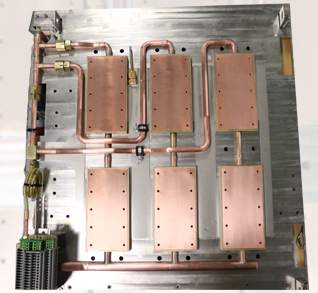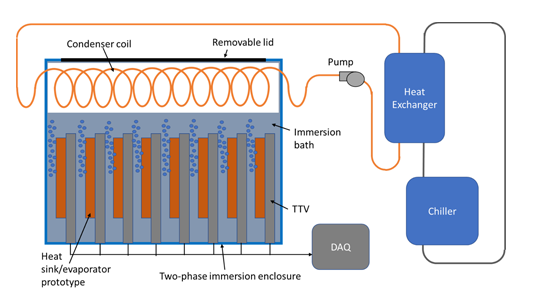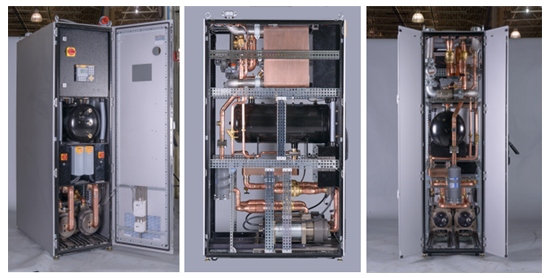Data Center Cooling Systems: Tackling Heat in a Digital World
In our digital-first world, data centers form the backbone of nearly every technology we rely on today. From processing emails to powering streaming services, or running demanding AI workloads, these facilities operate tirelessly around the clock.
Hyperscale data centers—sprawling, high-capacity facilities supporting cloud providers, social media platforms, and e-commerce giants—take this operational intensity to the next level. These massive infrastructures generate immense amounts of heat, making efficient cooling a critical priority for performance, reliability, and cost-effectiveness.
This blog explores why efficient cooling is indispensable and how the right data center cooling systems can help meet these challenges head-on.

The Heat Challenge in Data Centers
Data centers operate continuously, generating substantial heat from dense concentrations of servers, networking equipment, and other essential IT infrastructure. Key contributors to thermal loads include:
- Server Hardware: CPUs and GPUs generate considerable heat, especially in high-performance workloads like AI and machine learning. High-performance GPUs, for instance, can produce up to 3kW of heat each. The overall heat load can range from 5–50 kW per rack, with hyperscale data centers generating heat loads of 30–50 MW—equivalent to power consumption of 25,000–40,000 homes. (Source: NVIDIA, Uptime Institute)
- Power Conversion Systems: Energy losses during power conversion contribute additional heat. These systems can generate heat equivalent to 2- 5% of the total IT load, which must be efficiently managed to prevent overheating and system failure. (Source: ASHRAE)
- Networking Equipment: Switches and routers are responsible for a continuous transfer of data, causing internal temperatures to rise. In confined spaces, such equipment can reach temperatures of 37–49°C (100–120°F), exacerbating cooling demands. (Source: Schneider Electric)
- Ambient Heat: Lighting, UPS systems, and auxiliary systems also contribute to the overall heat load, though to a lesser extent. While their impact may seem minor, in large facilities, these sources can still add up to considerable thermal challenges.
- Hot Spots: Poor airflow management creates localized “hot spots,” where temperatures can exceed 37°C (100°F), further straining cooling systems and increasing the risk of equipment failure. (Source: Schneider Electric)
Without effective cooling, internal temperatures in data centers can exceed 50°C (122°F) within minutes, jeopardizing equipment performance, reliability, and cost-efficiency, while also increasing the risk of costly outages. Robust data center cooling systems are essential to mitigate these risks and maintain operational stability.
ASHRAE’s Thermal Guidelines for Data Processing Environments recommend maintaining equipment inlet air temperatures within a range of 18°C to 27°C (64.4°F to 80.6°F) to ensure optimal performance and equipment longevity, underscoring the importance of precise thermal management. (Source: ASHRAE Thermal Guidelines)
Why Efficient Cooling Matters
Efficient cooling for data centers is not just about controlling temperature—it’s essential for maintaining the entire system’s operation. Here’s how effective cooling impacts key areas:
- 1. Sustainability: As environmental standards become more stringent, energy-efficient data center cooling systems are critical for meeting corporate sustainability goals, minimizing waste, and reducing environmental impact.
- 2. Performance: Heat-related slowdowns or failures are unacceptable where milliseconds matter, like AI or real-time data processing. Proper cooling ensures peak performance.
- 3. Reliability: Efficient cooling systems stabilize temperatures, preventing thermal wear and extending the lifespan of hardware.
- 4. Energy Efficiency: Cooling can account for 30–50% of a data center’s total energy use. Advanced cooling solutions reduce energy waste and lower operational costs and carbon footprints.
Key Cooling Technologies for Data Centers
Efficient cooling is never a one-size-fits-all solution. At ACT, we recognize that every data center faces distinct thermal challenges that demand precision-engineered strategies. From individual components to entire facility infrastructures, our tailored data center cooling solutions address cooling needs at every level.
Leveraging advanced technologies like air, liquid, immersion, and hybrid cooling, we craft systems that maximize energy efficiency, handle increasing power densities, and enhance hardware reliability.

Direct-to-Chip Cooling (D2C)
A highly efficient form of liquid cooling, D2C technology targets scorching hot spots directly at the chip level using microchannel cold plates and single-phase liquid coolant. Heat is transferred through the cold plate’s internal channels and rejected at the radiator, enhancing the overall cooling system’s performance to prevent overheating.

Immersion Cooling
Immersion cooling is a technique where IT equipment is submerged in a thermally conductive, dielectric liquid that directly transfers heat away from the components. This method significantly improves heat dissipation efficiency, reducing the need for traditional air-cooling systems that utilize fans.
As a result, immersion cooling systems can reduce energy consumption by 20% to 30%, while also enabling higher server densities and enhancing overall performance and reliability.

Pumped Two-Phase (P2P)
Pumped Two-Phase cooling is an advanced thermal management technique that enhances the efficiency of direct liquid cooling systems and boosts the heat density capabilities of traditional air-cooled setups.
Utilizing the latent heat of vaporization, P2P systems can handle higher power applications with significantly reduced energy consumption compared to single-phase systems. P2P cooling systems rely on the latent heat of the fluid as opposed to the sensible heat in single-phase systems.
ACT’s expertise in P2P technology spans from cold plate design, optimized for high heat flux components like next-generation CPUs and GPUs, to modular, hot swappable racks with quick disconnects for seamless server maintenance and replacement.
This approach increases power density and allows data centers to achieve greater cooling efficiency while supporting the demands of increasingly powerful computing systems.

Loop Thermosyphons
Loop Thermosyphon technology is a passive cooling solution that efficiently manages heat in data centers without pumps or fans. Using natural heat transfer through phase change, this technology absorbs heat from servers and releases it in a cooler area, providing reliable cooling at the rack or room level.
Ideal for high-density environments, this technology reduces energy consumption, lowers operating costs, and extends equipment lifespan. Its scalability makes it suitable for both small and hyperscale data centers, offering a sustainable, low-maintenance solution for increasing heat loads.
Factors to Consider When Choosing Data Center Cooling Systems
Selecting the right cooling technology involves understanding your unique needs. Consider these key factors when selecting your data center cooling system:
- Heat Load: Can the system handle your facility’s heat generation requirements?
- Reliability: Does it support 24/7 operations without failure?
- Scalability: Will the system grow with your data center’s needs?
- Environmental Impact: How does it affect energy use and your carbon footprint?
- Location: Is your system optimized for local climate conditions?
- Cost: Evaluate both installation and long-term operational costs.
Challenges in Implementing Efficient Cooling
While the benefits are clear, there are challenges to address:
- Infrastructure Compatibility: Upgrading existing systems requires thoughtful integration with current infrastructure.
- Costs: Upfront investments can be significant, but energy savings and longer hardware life balance the equation.
- Space Constraints: Compact and densely populated data centers may face installation challenges.
ACT: Your Partner in Data Center Cooling Innovation
With expertise in thermal management and a commitment to innovation, ACT delivers solutions that enable data centers to perform at their best, even under the most demanding conditions. Whether your facility is hyperscale, enterprise, or edge, ACT helps you achieve efficiency, reliability, and sustainability, all while staying ahead of evolving technological needs.


